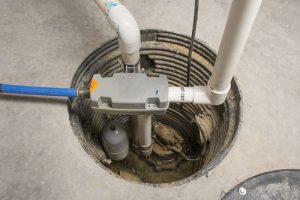 If you live in one of our service areas, the answer is most likely going to be a “yes,” but please allow us to elaborate!
If you live in one of our service areas, the answer is most likely going to be a “yes,” but please allow us to elaborate!
Essentially, if you’ve ever had standing water in your home’s basement or crawlspace, you need a sump pump. Considering how much rain and snow melt we get every year, this is a very real threat in the Evanston and greater Chicagoland area. Expertly installed sump pumps, however, are created to keep your home free of this standing water and flooding in order to protect your entire home from side effects such as mold and mildew growth, and rot that can develop from both.
When you’re ready to have on put into your basement, simply call the professional and trusted Evanston, IL plumbers on our team. In the meantime, read on to learn more about these convenient and necessary devices.
“How Does This Water Get Into My Home, Anyway?”
Great question! Households that are in high water table areas, that have wet yards or that are in run-off areas, can accumulate water in a number of ways. This can include cracks in the foundation, spaces around basement windows, failing mortar joints, and leaks in seals around your plumbing fixtures or other pipes that penetrate your homes foundation.
The most important factor to note, here, is that there doesn’t need to be a massive flood in order for your living space to incur water damage. Even the smallest amount of standing water can negatively impact the structural integrity of your property, and ruin any possessions that may be nearby.
How Does a Sump Pump Work?
First off, a sump pump is best used in the lowest part of your home—so, the basement or crawlspace (the areas below natural ground level). These are the locations that are most susceptible to water leaks and flooding—whether severe or not. The sump pump ensures that any water that enters is pumped out and away from your property before any lasting damage can occur.
The sump pump is created from two parts—the sump, which is a pig dug at the lowest part of your basement or crawlspace, and the pump. When enough water accumulates in the sump pit, it activates the pump, which turns on and literally pups the water out of the basin, directing it to your home’s drainage system or a dedicated drain pipe that leads up and away from your home.
Another note, if you haven’t already this season—inclement weather is picking up speed so now is a great time to test your sump pump and clear any debris out of it. You can test the system simply by pouring water into the sump and ensuring that the system activates in order to remove the water. If this does not occur, please give our pros a call for an inspection and possible repairs!
For expert plumbing service, installations, or maintenance contact Reliance Plumbing Sewer & Drainage, Inc. Our knowledgeable plumbers serve the North Shore and Northwest Chicago suburbs. Rely on Reliance!
